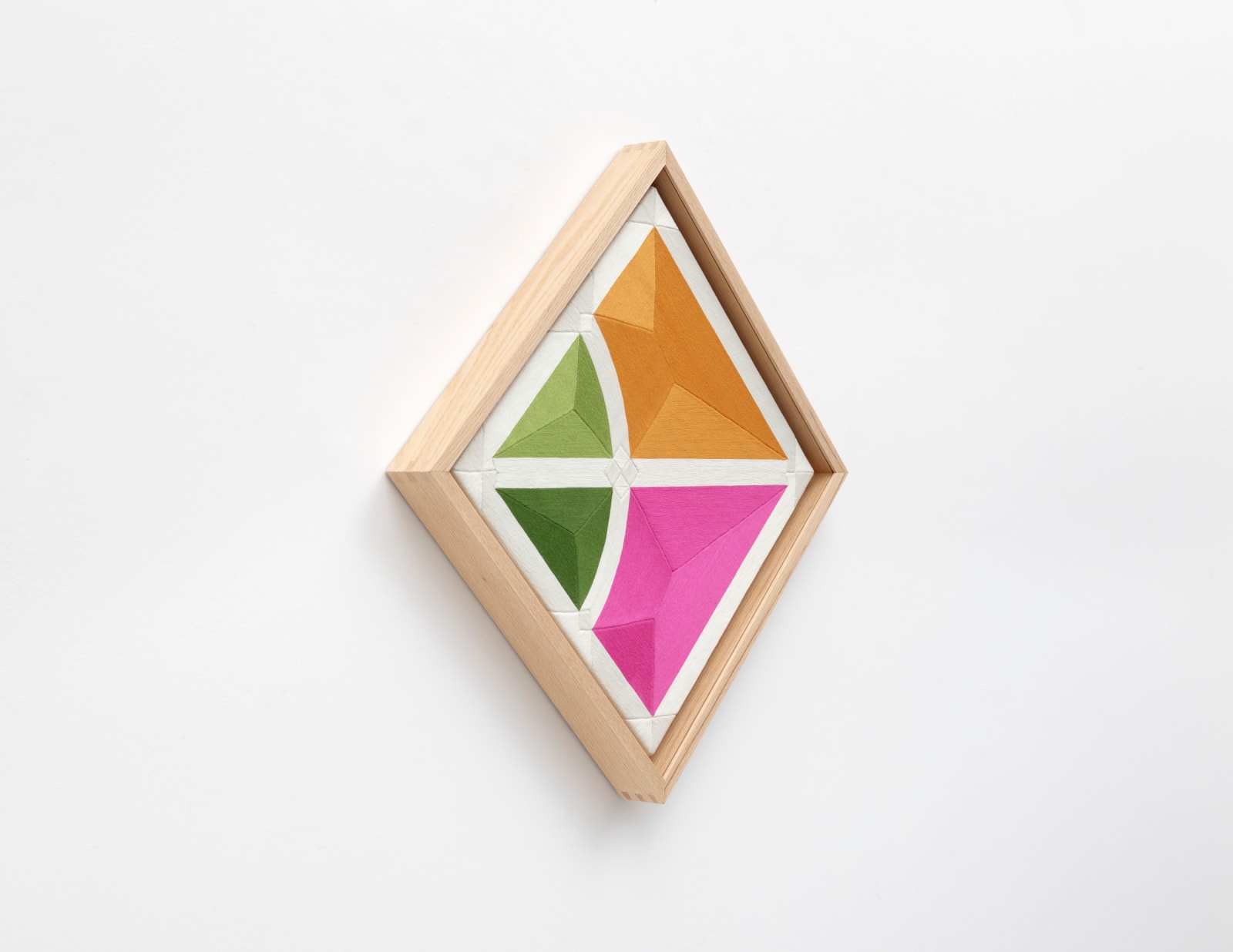Eduardo Terrazas
28.71 From the series: Cosmic Variations, 2024
Wool yarn on wooden board covered with Melipona bee wax and framed with Optium Museum Acrylic
65 x 65 cm
25.59 x 25.59 in
25.59 x 25.59 in
ET24009
Trained as an architect, Eduardo Terrazas (b. 1936, Mexico), has taken genuine interest in studying and contemplating the complexity of our contemporary world. Spirit, beauty, order, and technique serve as...
Trained as an architect, Eduardo Terrazas (b. 1936, Mexico), has taken genuine interest in studying and contemplating the complexity of our contemporary world. Spirit, beauty, order, and technique serve as the cornerstones defining his visual universe. His visual reflections stem from a geometric language and a technique inspired by the Huichol tablas, originating from a Mexican indigenous tribe.
The technique in question involves fixing colored wool onto wooden panels coated with Campeche wax, acting as an adhesive. The thread snakes along, reproducing the lines, curves, meanders and changes of direction required by the motif. This process entails tirelessly repeating back and forth movement, during which each strand is tightly glued along the previous one, leaving no gaps or openings between them.
While the Huichol employ this process to represent their cosmogony and the sacred entities animating it, Terrazas uses wood, wax and wool to map the universe. Though the forms are distinct — the former resolutely figurative, the latter abstract — the goal in both cases remains the same: to reveal and share a vividly unique pictorial version of their respective world views. Terrazas has spent a lifetime exploring questions about the nature of the universe through the microcosm of his images. His work suggests both a curiosity about the fabric of our universe and a profoundly human hope for an underlying rationality behind the chaos of the world.
The technique in question involves fixing colored wool onto wooden panels coated with Campeche wax, acting as an adhesive. The thread snakes along, reproducing the lines, curves, meanders and changes of direction required by the motif. This process entails tirelessly repeating back and forth movement, during which each strand is tightly glued along the previous one, leaving no gaps or openings between them.
While the Huichol employ this process to represent their cosmogony and the sacred entities animating it, Terrazas uses wood, wax and wool to map the universe. Though the forms are distinct — the former resolutely figurative, the latter abstract — the goal in both cases remains the same: to reveal and share a vividly unique pictorial version of their respective world views. Terrazas has spent a lifetime exploring questions about the nature of the universe through the microcosm of his images. His work suggests both a curiosity about the fabric of our universe and a profoundly human hope for an underlying rationality behind the chaos of the world.













